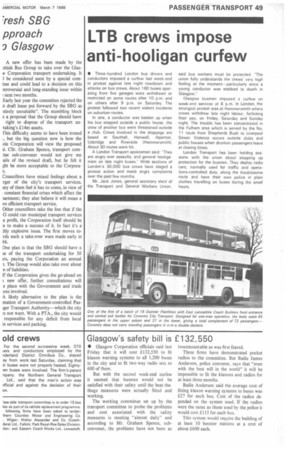LTB crews impose anti-hooligan curfew
Page 51

If you've noticed an error in this article please click here to report it so we can fix it.
• Three-hundred London bus drivers and conductors imposed a curfew last week-end in protest against late night rowdyism and attacks on bus crews. About 160 buses operating from five garages were withdrawn or restricted on some routes after 10 p.rn, and on others after 9 p.m. on Saturday. The protest followed two recent violent incidents on suburban routes.
In one, a conductor was beaten up when his bus stopped outside a public house, the crew of another bus were threatened outside a club. Crews involved in the stoppage are based at Southall, Hammel', Alperton, Uxbridge and Riverside (Hammersmith). About 30 routes were hit.
A London Transport spokesman said: "They are angry over assaults, and general hooliganism on late night buses.Wide sections of London's 30,000 bus crews have staged a protest action and made angry complaints over the past few months.
Mr. Jack Jones, general secretary elect of the Transport and General Workers Union, said bus workers must be protected. "The union fully understands the crews' very high feeling at the moment--particularly since a young conductor was stabbed to death in Glasgow."
Glasgow busmen imposed a curfew on week-end services at 8 p.m. In London. the strongest protest was at Hammersmith where crews withdrew late night labour, forfeiting their pay, on Friday, Saturday and Sunday night. The trouble has been concentrated in the Fulham area which is served by the No. 11 route from Shepherds Bush to Liverpool Street. Violence occurs outside clubs and public houses when drunken passengers leave at closing times.
London Transport has been holding sessions with the union about stepping up protection for the busmen. They deploy radio cars, normally used for traffic and operations-controlled duty, along the troublesome route and have their own police in plain clothes travelling on buses during the small hours.












































































































































































